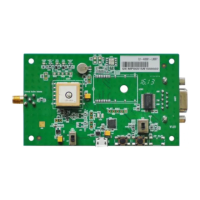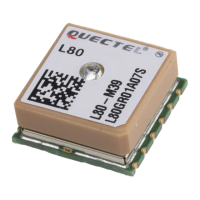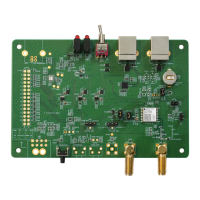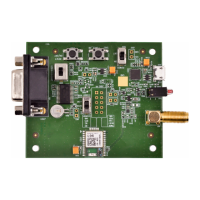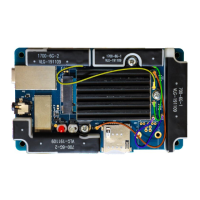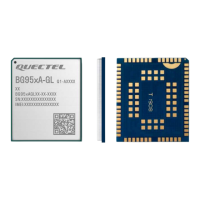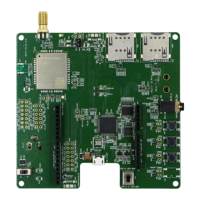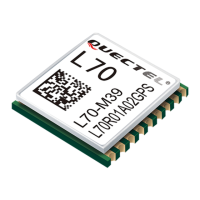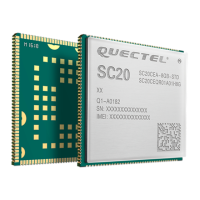GNSS Module Series
L76&L76-L_Hardware_Design 43 / 59
Table 6: Intermodulation Distortion (IMD) Products
5.3.2. Out-of-Band Interference
Strong signals transmitted by other communication systems can cause a GNSS receiver to become
saturated, so that its performance is greatly deteriorated, as illustrated in the following figure.
Power [dBm]
0
-110
0 500 1000 2000 2500
Frequency [MHz]
GPS carrier frequency
1575.42 MHz
GPS 带宽
GSM850
GSM900
PCS1900DCS1800
Wi-Fi 2.4 GHz
Figure 24: Out-of-Band Interference on GPS L1
5.3.3. Ensuring Interference Immunity
There are several things you can do to decrease the impact of interference signals and thus ensure the
interference immunity of a GNSS receiver:
⚫ Keep the GNSS antenna away from interference sources;
⚫ Add a band-pass filter in front of the GNSS module;
⚫ Use shielding and multi-layer PCB and ensure adequate grounding;
⚫ Optimize layout and component placement of the PCB and the whole device.
F2 (2412 MHz) - F1 (837 MHz)
2 × F1 (1712.6 MHz) - F2 (1850.2 MHz)
F2 (5280 MHz) - 2 × F1 (1852 MHz)

